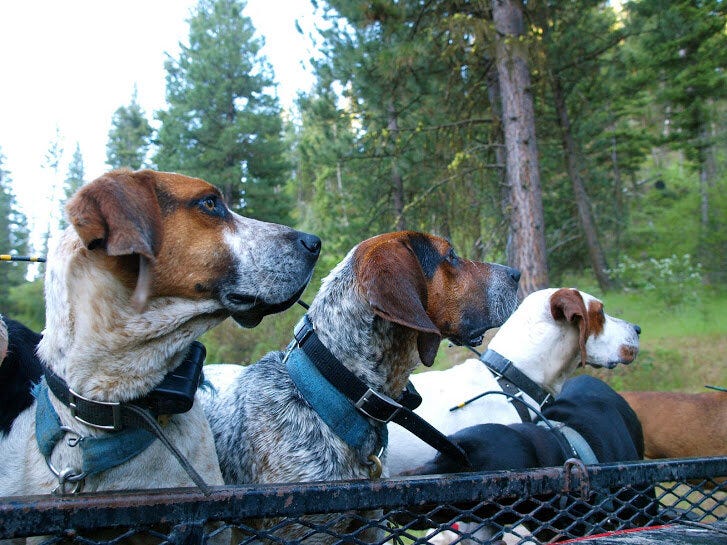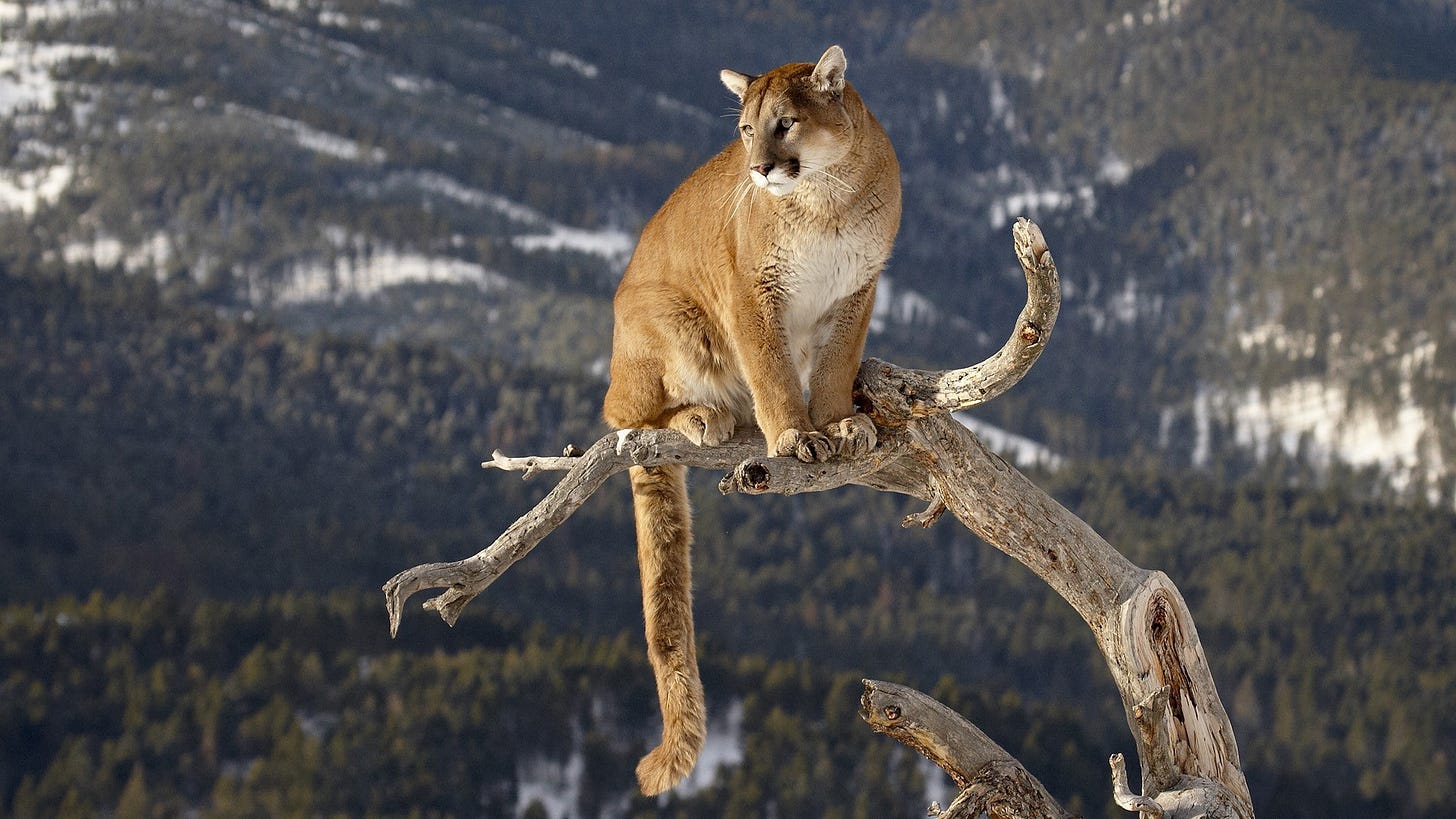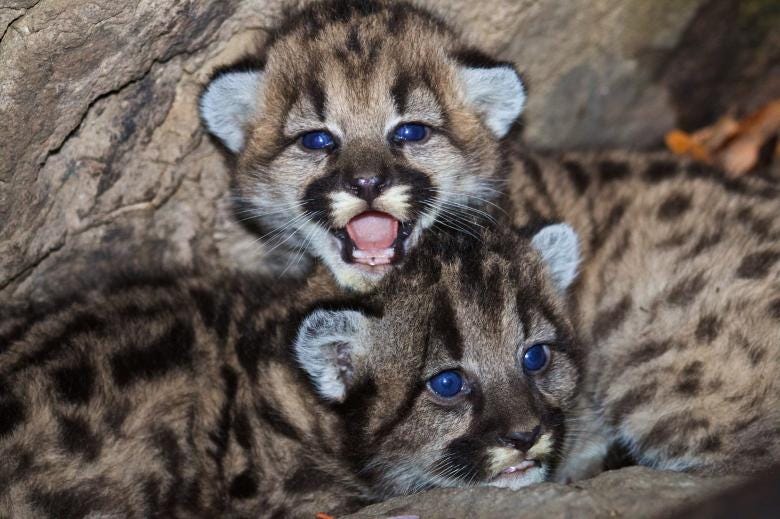Busting Myths About Hunting Mountain Lions
There's a big cat hunting ban on the Colorado ballot this year. Here are a few truth bombs about mountain lion hunters and hunting.
Colorado predators will be back on the ballot this November. Initiative 91, “To Prohibit Trophy Hunting,” received enough signatures to go to the voting booth. This means, once again, how the Centennial State manages its wildlife will be a matter of public opinion. Rather than relying on sound science, this move puts the decision-making process into the hands of mostly wildlife-ignorant urbanites.
Most Colorado voters don’t even live in areas where they could rub elbows with mountain lions, yet here they are with the power to influence how the state manages its cougar population. They also have the political sway to tell rural residents how to handle the predators that regularly waltz through their backyards.

The wording of Initiative 91 makes the move seem noble.
The voters of Colorado find and declare that any trophy hunting of mountain lions, bobcats, or lynx is inhumane, serves no socially acceptable or ecologically beneficial purpose, and fails to further public safety.
First of all, why do voters get to decide that hunting serves no ecologically beneficial purpose or fails to further public safety? Will they be singing the same tune when mountain lion-human interactions increase?
It goes on to say:
Trophy hunting is practiced primarily for the display of an animal’s head, fur, or other body parts, rather than for utilization of the meat. Moreover, it is almost always conducted by unsporting means, including, but not limited to, using packs of dogs with electronic devices to pursue and entrap affected animals in places from which they cannot escape in order to achive the kill.
As usual, there’s a ton of myth and misunderstanding here, so I figured it was time for another little myth-busting session. This one is specifically geared toward mountain lion hunting, but a similar case can be made for hunting bobcats and lynx.
Busting Myths About Mountain Lion Hunting
Humans have hunted predators, including big cats like the North American mountain lion, since at least the Pleistocene Era. Only in recent history has predator hunting become controversial.
Myth #1: We Don’t Eat Mountain Lions
Truth: Lion meat is lean, mild, fine-grained, and surprisingly tender. Cuts of meat can be prepared using methods and presentations appropriate for store-bought pork or veal.
Although many Americans have a deep-seated bias against eating predator meat, mountain lion meat makes appropriate and delicious table fare. In recent years, more and more hunters are choosing to utilize the meat as well as the hides of the lions they harvest.
Myth #2: Hunting Mountain Lions with Hounds is Cruel
Truth: Mountain lions are one of the most elusive animals in North America, which can make population estimates tricky. Even seasoned hunters often go their entire lives without glimpsing one of these big cats in the wild.
Well-trained hounds and their handlers have been integral to mountain lion research and management for decades. Experienced houndsmen see more cats than any other group of people. Much of our modern understanding of mountain lions is directly connected to the use of dogs.
Hunting with hounds is actually one of the most humane ways to hunt mountain lions because the method provides the opportunity to hunt these big cats selectively. Mountain lions have less obvious sex-specific characteristics than deer and elk, whose males sport tell-tale antlers. Sexing a lion from a distance is tricky. However, males and sub-adult cougars have a conspicuous patch of black hair just below the anus, which is easily observed on a treed cat. Using hounds is the only way to hunt mountain lions selectively and provides the chance to release cats that don’t need to be removed from an area. For example, it allows hunters to only harvest males, releasing females to raise kittens successfully.
Unfortunately, in some states, including California, Oregon, and Washington, it is unlawful to hunt mountain lions with dogs. Those states have relatively high mountain lion populations. Many of those states also use taxpayer money to pay government employees to cull lions using dogs. Hunters would gladly purchase hound permits, generating more funds to conserve mountain lion habitat.
Myth #3: Mountain Lions Strengthen Prey Populations by Culling the Sick and the Weak
Truth: Many anti-hunting organizations claim cougars benefit prey populations by targeting sick or weak animals. However, a 2014 study published in the Journal of Wildlife Management suggests mountain lions are more opportunistic hunters. Observations during the study showed that any deer or elk the lions spotted where they could be stalked were likely to be killed and eaten.
In spring and summer, many elk calves and deer fawns end up on mountain lion menus. Young ungulates make easy targets for females, teaching their young to hunt, and lions are regularly credited with high rates of elk calf mortality. One 2019 study published in The Journal of Wildlife Management showed mountain lions were responsible for 45% of known-cause calf deaths in Idaho, more than any other predator.
Myth #4: Hunting Mountain Lions is Cruel
Truth: Nature has no moral boundaries. She kills, often indiscriminately, using floods, fires, starvation, and disease. Prohibiting the legal, managed hunting of mountain lions will not prevent violent deaths.
In contrast, humans are the only predators on Earth who care about their prey. Humans impose bag limits, close hunting seasons, restrict the use of certain weapons, and often prohibit the killing of females. Humans also actively restore and preserve habitats and painstakingly reintroduce species into areas once stripped clear.
Hunters also fund conservation programs through purchases of licenses, tags, and permits, as well as taxes on firearms, ammunition, and sporting equipment. Additionally, hunters willingly donate more than $440 million annually to conservation efforts through their support of groups like the Rocky Mountain Elk Foundation, Ducks Unlimted, the National Wild Turkey Foundation, and the Mule Deer Foundation.
North American hunters are largely responsible for bringing many game species back from the brink of extinction. Without their efforts and financial support, we would not have the healthy and abundant wildlife populations we enjoy today, including mountain lions.
Myth #5: Mountain Lion Populations Don’t Need to be Managed by Humans
Truth: Biologists say cougar ranges are expanding dramatically. A 2001 study indicated that from 1960 to 1995, mountain lion distribution nearly tripled in Montana. Several other states have experienced similar expansion.
Although the range expansion may seem like good news for puma populations, resources can support only a limited number of cats. Expanding ranges mean an increase in human/cat interactions.
To complicate matters, mountain lions need a tremendous amount of land and resources. Because cougars are both solitary and territorial, they require large tracts of habitat. According to the National Wildlife Foundation, a mountain lion needs approximately “13 times as much area as a black bear or 40 times as much area as a bobcat to thrive.”
Unfortunately, the modern landscape doesn’t naturally support the types of habitat mountain lions need to thrive. Much of the big cats’ home range is severely fragmented. Two hundred years ago, North America offered vast swaths of wild space. Travel corridors allowed crowded species to spread out and find sufficient habitat. Modern wildlife doesn’t have that flexibility, so predator populations must be actively managed to protect prey species.
Over time, human civilization has fractured the continent’s wild spaces. The result is isolated islands of suitable habitats that lack the resources to support unlimited predators. When left unchecked, predator populations can quickly exceed the carrying capacity of their habitat, causing prey species in those areas to suffer drastically.
State wildlife agencies go to great lengths to ensure hunting doesn’t endanger population numbers. Hunting seasons and quotas are based on field research and harvest data. Once regulations are implemented, wildlife departments continue to research, monitor the population, and adapt management strategies based on the latest available data.
Mountain lion populations tend to respond quickly to adjustments in hunting quotas. Because mountain lions do not have a defined breeding season, they can reproduce any time of year. With one to five kittens in each litter, numbers can rapidly increase.
The Bottom Line
Many anti-hunting organizations (which often disguise themselves as “pro-animal” or “pro-conservation”) have specifically targeted mountain lion hunting as “cruel” or “barbaric” and have worked long and hard to influence public opinion. Although these groups present several arguments against lion hunting, these fragile claims rely heavily on emotion rather than sound science. Science is a far more effective tool for managing wildlife than raw emotion. It’s why the North American Model of Conservation has been so successful.






Another useful and very informative article Alice. Thank you for shedding some light on this misguided ballot measure. (Your article should have been required reading in the Blue Book.)